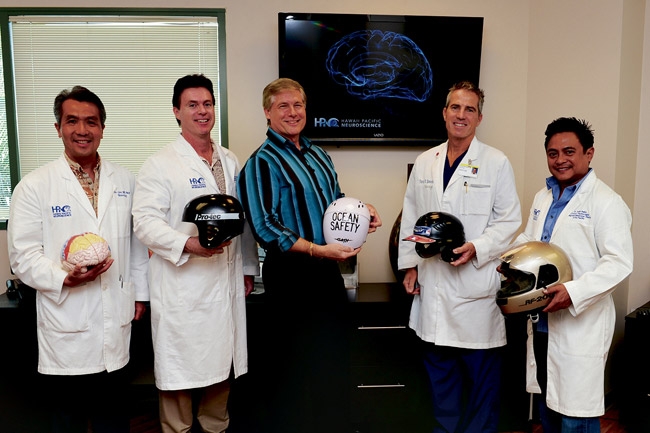Latest Findings On Brain Injuries
Dr. Robert Sloan
Director of the Concussion Care Center at Castle Medical Center
Where did you receive your schooling/training?
I did my undergraduate studies in nutrition at UH Manoa, then I went to the University of California, where I majored in biology and religious studies. After that, I worked as a San Jose State University graduate assistant teaching anatomy and physiology to nursing students. I attended medical school at the University of California-Davis, and did my surgical internship at Santa Barbara Cottage Hospital, and my residency in physical medicine and rehabilitation back at UC Davis.
dih_3
How long have you been in practice?
More than 20 years – two years at Rehabilitation Hospital of the Pacific as director of the brain injury program and chronic pain program. Then I moved to the Big Island for 20 years – 10 in Kona and 10 in Hilo.
What duties does your role involve?
I personally see most of the patients and coordinate care with the other providers in the program. We evaluate the extent of the concussion with a physical exam, EEG (electroencephalogram, which measures brain activity) and neuropsychological testing. We determine the necessary treatment, whether it is medications or therapy, including psychological therapy. Then we decide on when we can recommend their return to playing sports or other activities.
EEG tech Tery Marsh conducts an EEG to evaluate for brain damage Nathalie Walker photo, nwalker@mideek.com
Who do your athlete-patients tend to be?
At the Concussion Care Center, I see high school, college and professional athletes. I see North Shore big-wave surfers, and professional boxers and MMA athletes. I was Brian Viloria’s doctor for his last world championship fights here in the Islands. We also see brain injury patients from motor vehicle accidents and falls, especially from bicycles and skateboards.
What are the latest findings regarding concussions in sports?
A concussion is a brain injury, whenever the brain is shaken inside the skull. Brain bruises and even more serious bleeds can occur, but the key to a concussion is when the nerve cells of the brain are sheared or stretched, twisted and torn by the brain being “shaken and stirred” when the head is moved suddenly.
For years, I have been speaking about concussions and trying to increase awareness of how serious they are. I last spoke at the 2002 Winter Olympics in Salt Lake. Recently, I was compelled to start giving talks again because of new information that has confirmed our fears. We have known for a long time that it was not just serious loss of consciousness that caused permanent brain damage. Studies have confirmed that mild head impacts repeated over time, even with helmets, cause permanent, cumulative brain damage. The brain is very delicate and doesn’t heal as well as other parts of the body. Even mild concussions sustained during practice sessions can lead to cumulative brain damage. The newest studies have shown through postmortem brain biopsies that damaging protein tangles, called tau, accumulate and are being shown even in young people after a series of brain injuries. These abnormal proteins are thought to spread into healthy brain tissues later in life, like an infection, causing further degenerative neurologic damage.
What vital information should parents and coaches be aware of concerning their children’s brain health when playing sports?
A concussion is a brain injury. Unfortunately, you can’t ice the brain. In fact, icing drugs (anti-inflammatories) can be a bad idea after a concussion because they could increase bleeding in the brain.
Very importantly, loss of consciousness is not required to diagnose a concussion. Any change in consciousness after an impact is all that is needed. Often, the symptoms are a headache, or feeling “dinged,” confused, fatigue, sleepiness, dizziness, irritable, or having memory problems, slow thinking or depression. No one should continue to play or risk another concussion if they are still experiencing symptoms of a prior concussion. If they do, they are at much higher risk of another more serious, even life-threatening brain injury.
Is there an age that’s most susceptible to injury?
The brain at any age is very sensitive to concussion. Children are particularly susceptible to the injurious effects because they are still developing, and brain injuries can slow down and limit their development. Important connections and coordination of brain function can be stalled, interrupted and limited.
Anything you would like to add?
Any sport that involves impacts, whether it is heading the ball in soccer or hitting the head with a glove or another helmet, increases the risk of brain injury. Again, helmets do not prevent concussions.






